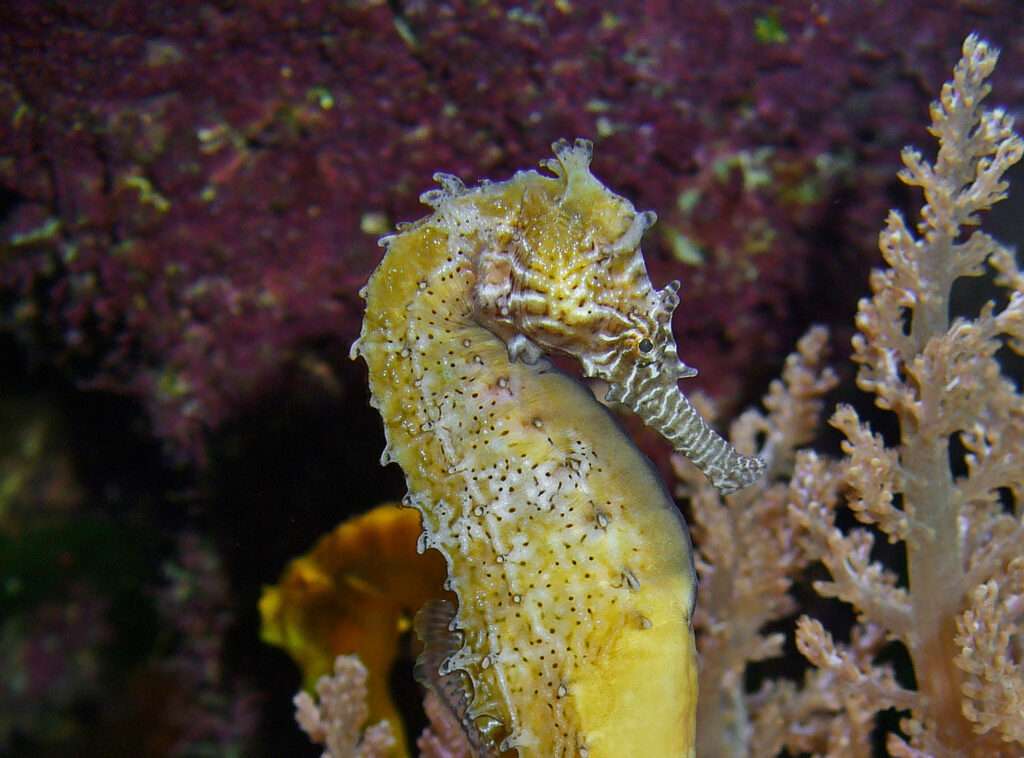
The marine fish species known as the knobby seahorse (Hippocampus breviceps), often referred to as the short-headed seahorse or short-snouted seahorse, belongs to the family Syngnathidae. Adults live in inland waters. Occur in small to large aggregations, mostly in Sargassum weeds, in weed patches attached to rocks on sand. Ovoviviparous. The male under the tail in a brood pouch carries the eggs. In a pouch, the male incubates the eggs. produces between 50 and 100 offspring in a single or many females’ combined brood.
Traits
H. breviceps, which is typically about 10 centimeters (3.9 in) long, has a small, slender body, a high coronet and a short snout. On the backs and skulls of individuals, there are frequently fleshy tendrils. The color ranges from dull grey to bright yellow-orange, and the trunk and tail have little black patches and white ocelli. On the ventral side of the tail are pale bands.

Appearance
(Based upon 40 samples) 4.5 to 8.0 cm for adults. Rings: 11 + 40 (39-43). 3.0 length of snout (2.4-3.5). 20–21 (19–23) rays on the dorsal fin, each spanning 3+1 rings. 14–15 pectoral fin rays (13-15). Coronet: a tall, slender column or knob. Spines: irregularly formed with rounded tubercles, some very low and others extremely noticeable. Adult males also have a big brood pouch and can develop a thick mane of skin fronds on their head and neck. Its color is purplish brown, yellowish, or reddish; it has numerous white spots with dark borders (ocelli); it frequently has dark spots or patches, especially on the head; and it has whiter transverse stripes on the ventral portion of the tail.
Habitat
Living on protected coastal reefs with seagrass and macroalgal beds is H. breviceps. Additionally, individuals have been discovered on jetty habitats, rock reefs, floating macroalgae, and sponge reefs at depths of less than 15 meters (49 ft). This species is most frequently seen at depths of about 5 meters.
Feeding
Mysids, harpacticoid copepods, gammarid and caprellid amphipods are the main food sources for this carnivorous species. It stays close to the sand or rubble bottom while feeding during the day.
Reproduction
In the summer, H. breviceps reproduces on a roughly monthly cycle, giving birth to 50–100 young per brood. The male receives the female’s eggs, fertilizes them, and protects them before the male gives birth to live children.
Table





